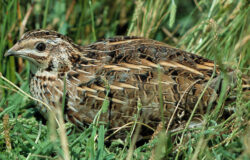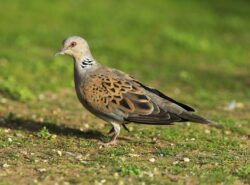Hunting | BirdLife Malta (original) (raw)
Autumn hunting
Each year the autumn hunting season in Malta runs between 1st September and 31st January (both days included). Hunting during autumn is permitted for 40 species from land and 12 species at sea. Of these, the European Turtle-dove (Gamiema) can only be hunted between 1st September and 30th September. The overall bag limit for the autumn hunting season for Turtle-dove is 500.
Want to know what is permitted or illegal during the autumn hunting seasons? Download the guidance sheet we prepared for the autumn hunting season in Maltese or English below, with details about the season and photos of all 40 huntable species.
Autumn hunting guidance sheet
Gwida dwar il-kaċċa fil-ħarifa
Spring hunting
The spring hunting season 2024 ran between 10th and 30th April.
Spring hunting in Malta is currently the subject of Infringement Proceedings initiated by the European Commission against the Maltese Government in December 2020 and also in mid-February 2023. According to the Commission, this derogation falls short systematically of the requirements set out in the legislation, related in particular to poor supervision of the conditions set out in the derogation, which results in other species than those targeted being affected.
Common Quail (Photo by SEO/BirdLife Spain)
Relying on insufficient or inaccurate information about the populations of wild birds and the available alternatives, Malta also failed to fulfil the basic conditions for granting such derogation. Not least, the high numbers of wild birds illegally shot in Malta constitute a major and systemic failure to establish a general system of protection as required by Article 5 of the Birds Directive.
In 2022, 2023 and 2024, with a difference to spring hunting seasons since 2017, spring hunting in Malta was opened not just for Common Quail (Summiena), but also for the Vulnerable European Turtle-dove (Gamiema), which is now no longer protected in spring, after government lifted a moratorium on its spring hunting.
European Turtle-dove (Photo by Denis Cachia)
Despite being red-listed by the IUCN as Vulnerable to Extinction, and with the European Commission asking for its protection across Member States, Malta once again risked further infringement proceedings to appease the hunting lobby to hunt this species. The re-opening of the spring Turtle-dove hunt in 2022 after the moratorium was lifted in fact led the European Commission to take new action against Malta, extending the action it had initiated in December 2020 (when the season was opened for Common Quail) against Malta to also cover the Turtle-dove. Attempts in the local courts by BirdLife Malta in 2022, 2023 and 2024 to stop the Turtle-dove spring hunt through a Warrant of Prohibitory Injunction all failed. However a court case in this regard is still ongoing, initiated in November 2022.
The dates for this year’s hunting season were between the 10th and the 30th of April 2024. Hunting on Common Quail was permitted from the 10th until the 30th, while hunting on Turtle-dove was permitted between the 17th and the 30th of April. Data by the Wild Birds Regulation Unit (WBRU) shows that a total of 7,969 hunters (6,643 in Malta and 1,326 in Gozo) were granted the licence to hunt during this year’s spring hunting season.
You can find Legal Notice 85 of 2024 announcing the Derogation for a 2024 Spring Hunting Season for Common Quail in English here, and in Maltese here. Legal Notice 89 of 2024 announcing the Derogation for a 2024 Spring Hunting Season for European Turtle-dove can be found here (English) and here (Maltese).
Want to know what was permitted or illegal during the spring hunting season? Download our Illegal Hunting Activity Guidance Sheet in Maltese or English for the spring hunting season_._
For more information about spring hunting in Malta and the differences between the Common Quail and the Vulnerable European Turtle-dove click here.
Laws & reporting
Any illegalities during the closed and open seasons should be reported immediately to the police on 119, asking to be transferred through to the Environmental Protection Unit (EPU), previously known as the Administrative Law Enforcement (ALE) unit.
Please then report to BirdLife Malta on 2134 7645 or on the emergency (out of office hours) number 7925 5697.
If you need any extra help, download our step-by-step guide in Maltese or English below on how to report illegal hunting to the police.
How to report illegal hunting
Kif tirrapporta kaċċa illegali
Illegal hunting
Every spring and autumn, Malta becomes a vital stepping stone for birds using this migratory route to move between European breeding and African wintering grounds and the islands act as a place to rest and regain fat supplies before continuing on these long and taxing journeys.
Due to its strategic location on this key migration route, Malta has a long and impressive species list, totaling 389 species that have been recorded. Of these, over 170 occur with regularity on migration, in many cases in significant numbers. Scientific ringing studies carried out by BirdLife Malta since the 1960s have shown that birds from at least 48 countries use Malta during migration. Malta also has an exceptionally high density of hunters and per square kilometre has the densest population of hunters in the European Union.
Illegal hunting is a widespread and serious problem, with poachers specifically targeting raptors (birds of prey) and Herons as well as rare migratory birds such as the Greater Flamingo, Black Stork and Eurasian Spoonbill, among others. This persecution reaches its peak during migration periods. Furthermore, illegal hunting continues throughout the year and it is primarily due to this intense persecution that Malta has the dubious distinction of being the only country in Europe and the Mediterranean with no regularly breeding birds of prey. Species such as the Barn Owl and the Eurasian Jackdaw have become locally extinct with the last breeding pairs known to have been shot by hunters. Since 2007, BirdLife Malta has been keeping a centralised database on illegal hunting and trapping incidents witnessed by BirdLife Malta staff, ornithologists, volunteers and members of the public known to the organisation. Other reports from unknown individuals and hearsay reports are not included in this database. An analysis of the database is published annually.

